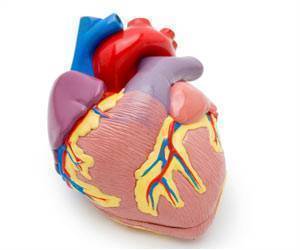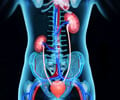A new classification of coronary congenital diseases is set to help surgeons identify secondary defects in the operating theater.

‘A new classification of coronary congenital diseases by the European Society of Cardiology is set to help surgeons identify secondary defects in the operating theater.’





Professor Cristina Basso, chairperson of the ESC Development, Anatomy and Pathology Working Group, said, "It can be difficult to spot further defects in the stressful environment of the operating theater. Coronary congenital diseases affect less than 1% of newborns but are an important cause of myocardial infarction and sudden death particularly in children and competitive athletes. These conditions are often forgotten in the clinical setting since atherosclerotic coronary artery disease is far more common." The paper launches a new classification of coronary artery anomalies that explains common points of origin between different coronary defects. By identifying the origin of the primary defect, doctors can evaluate the probability of finding specific secondary defects with an origin mechanistically related to the main anomaly.
First author Dr. Pomares said: "We have established links between coronary congenital diseases sharing a common mechanism. When operating a diagnosed coronary anomaly, it can be difficult for surgeons to spot further defects in the stressful environment of the operating theater and having an idea of the anomalies you might find can be extremely helpful. The new classification will also help clinicians using imaging to diagnose coronary artery anomalies and prevent future complications."
He further added, "We have been able to produce this classification because we understand more about how coronary arteries develop in the embryo and how they relate to major diseases. The paper provides basic cardiovascular research scientists with new, updated information on the complex embryonic development of coronary arteries to throw light on the etiology of coronary congenital anomalies."
The authors give their expert opinion on the embryonic origin of the coronary endothelium, which is a controversial topic in cardiovascular developmental biology. Dr. Pomares said: "For a long time scientists have wanted to identify a single and unique source for coronary endothelial cells but we now know that they come from different sources that merge together. This appears to have an impact on what happens to coronary vessels during embryonic development but perhaps also in the adult."
Advertisement
The diverse origin of coronary smooth muscle cells and fibroblasts are also described. Remarkably, adventitial fibroblasts that cover the arteries share a common embryonic origin with adult interstitial fibroblasts located between the myocardial fibers which are responsible for fibrotic scar formation after myocardial infarction. This finding also suggests that embryonic cues related to coronary development could be relevant for understanding cardiac fibrosis in the adult ischemic heart.
Advertisement
Professor Basso concluded, "This is a translational paper written by basic scientists, including developmental biologists, anatomists and pathologists. It contains practical information to help clinicians diagnose coronary artery anomalies and prevent devastating complications including sudden death."
Source-Eurekalert














